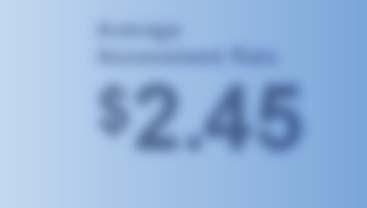
4 minute read
HIGHLIGHTS & ACCOMPLISHMENTS
Through prudent management of the worker’s compensation system, and a growing culture of safety in the province, the Workplace Health, Safety and Compensation Commission is well positioned to meet the needs of all workers and employers in Newfoundland and Labrador.

Advertisement

Lower Rates and Higher Benefits
Assessment rates for employers were lowered by $0.30 to $2.45 per $100 of assessable payroll effective January 1, 2014. This was the first time that rates were lowered since 2006, and 99.8 per cent of employers saw a decrease in their assessment rates for 2014. The rate continued to include the $0.25 surcharge to address the previous injury fund deficit. Also effective January 1, 2014, the maximum compensable and assessable earnings (MCAE) was increased from $54,155 to $60,760, consisting of a base increase of $6,000 plus a 1 per cent adjustment for the Consumer Price Index. This means that in 2014 Newfoundland and Labrador provided the highest MCAE in Atlantic Canada.



Secure Financial Position
The Commission’s financial position continues to improve, and remains the best it has been in over 30 years. The injury fund (investments), which provides security for injured workers and sustainability for employers, has increased from $1.0 billion in 2013 to $1.1 billion in 2014. The Commission’s rate of return on its investments was higher than expected at 11.6 per cent, versus 16.3 per cent in 2013, and above the target of 6.6 per cent despite the second largest ever annual decline in the price of oil in 2014.The funded position (percentage of assets available to fund its total liabilities) has also increased from 106.5 per cent for 2013 to 112.0 per cent in 2014. This is the first time the funded position has exceeded the target of 110 per cent since the stakeholder approved Funding Policywas adopted in 2009.
As the funding target has now been achieved, the Commission may be in a position to remove the $0.25 surcharge in assessment rates for employers, while maintaining the sustainability of the fund for injured workers. As the 2015 rates have already been communicated, a decision will be made in the 2016 rate-setting exercise.
Average Assessment Rate $2.45








Clarence has been employed
Clarence Squibb 70, with Hickman Motors for 43 year employee at 43 years. He attributes his Hickman Motors, St. John’s longevity tostaying fit, exercising
regularly and stretching before each shift. He does not take chances with safety, his motto is: “If it’s not safe, I’m not doing it”.



Improved Web Services
In 2014, the Commission introduced online invoicing for chiropractors and enhanced its online invoicing for physiotherapists. This streamlineshow these health care professionals deal with the Commission and ensures proper management of services procured on behalf of injured workers. Uptake of the new service has been positive, with 81 per cent of chiropractic invoices and over 97 per cent of physiotherapy invoices being submitted online. The Commission will continue to work with health care providers to improve web services and ensure health care costs are prudently managed while maintaining a high quality of care.



Review of OHS Committee Training
In 2014, the Commission completed a review of the Occupational Health and Safety (OHS) Committee Certification Training Standard which was originally implementedin 2002. Based on feedback from the OHS Branch of Service NL and stakeholders, the Commission will revise the training standardto ensure workers
Injury Fund $1.1B
receive current, competency-based training. The new standard will introduce interactive components for workers to apply safety principles and practices applicable to their role on an OHS Committee. The new program will be introduced in 2015, with recertification to be phased in by July 2018.
Funded Ratio 112.0%
PRIME
PRIME is the Commission’s employer incentive program which rewards employers who implement and document occupational health and safety and return-to-work practices, and holds those with higher costs of injuries responsible. In 2014, the refunds available and issued continued to grow. The total value of PRIME refunds available increased from $23.2 million in 2013 to $26.2 million in 2014. Likewise, the total value of refunds issued to employers increased from $16.3 million in 2013 to $19.0 million in 2014. Employers paid back $4.2 million in experience charges in 2013 compared to $3.3 million in 2014.








